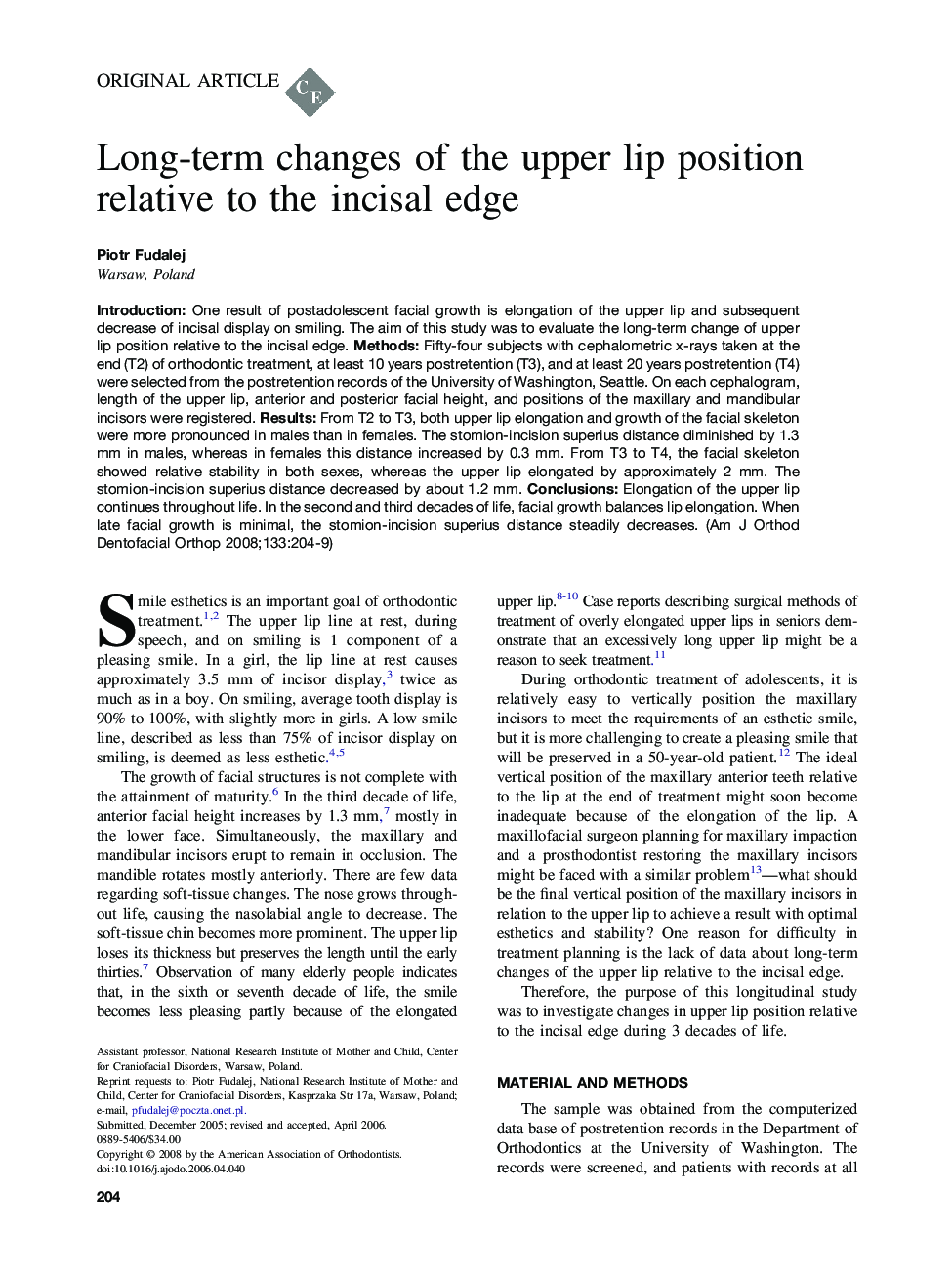| Article ID | Journal | Published Year | Pages | File Type |
|---|---|---|---|---|
| 3120358 | American Journal of Orthodontics and Dentofacial Orthopedics | 2008 | 6 Pages |
Introduction: One result of postadolescent facial growth is elongation of the upper lip and subsequent decrease of incisal display on smiling. The aim of this study was to evaluate the long-term change of upper lip position relative to the incisal edge. Methods: Fifty-four subjects with cephalometric x-rays taken at the end (T2) of orthodontic treatment, at least 10 years postretention (T3), and at least 20 years postretention (T4) were selected from the postretention records of the University of Washington, Seattle. On each cephalogram, length of the upper lip, anterior and posterior facial height, and positions of the maxillary and mandibular incisors were registered. Results: From T2 to T3, both upper lip elongation and growth of the facial skeleton were more pronounced in males than in females. The stomion-incision superius distance diminished by 1.3 mm in males, whereas in females this distance increased by 0.3 mm. From T3 to T4, the facial skeleton showed relative stability in both sexes, whereas the upper lip elongated by approximately 2 mm. The stomion-incision superius distance decreased by about 1.2 mm. Conclusions: Elongation of the upper lip continues throughout life. In the second and third decades of life, facial growth balances lip elongation. When late facial growth is minimal, the stomion-incision superius distance steadily decreases.
